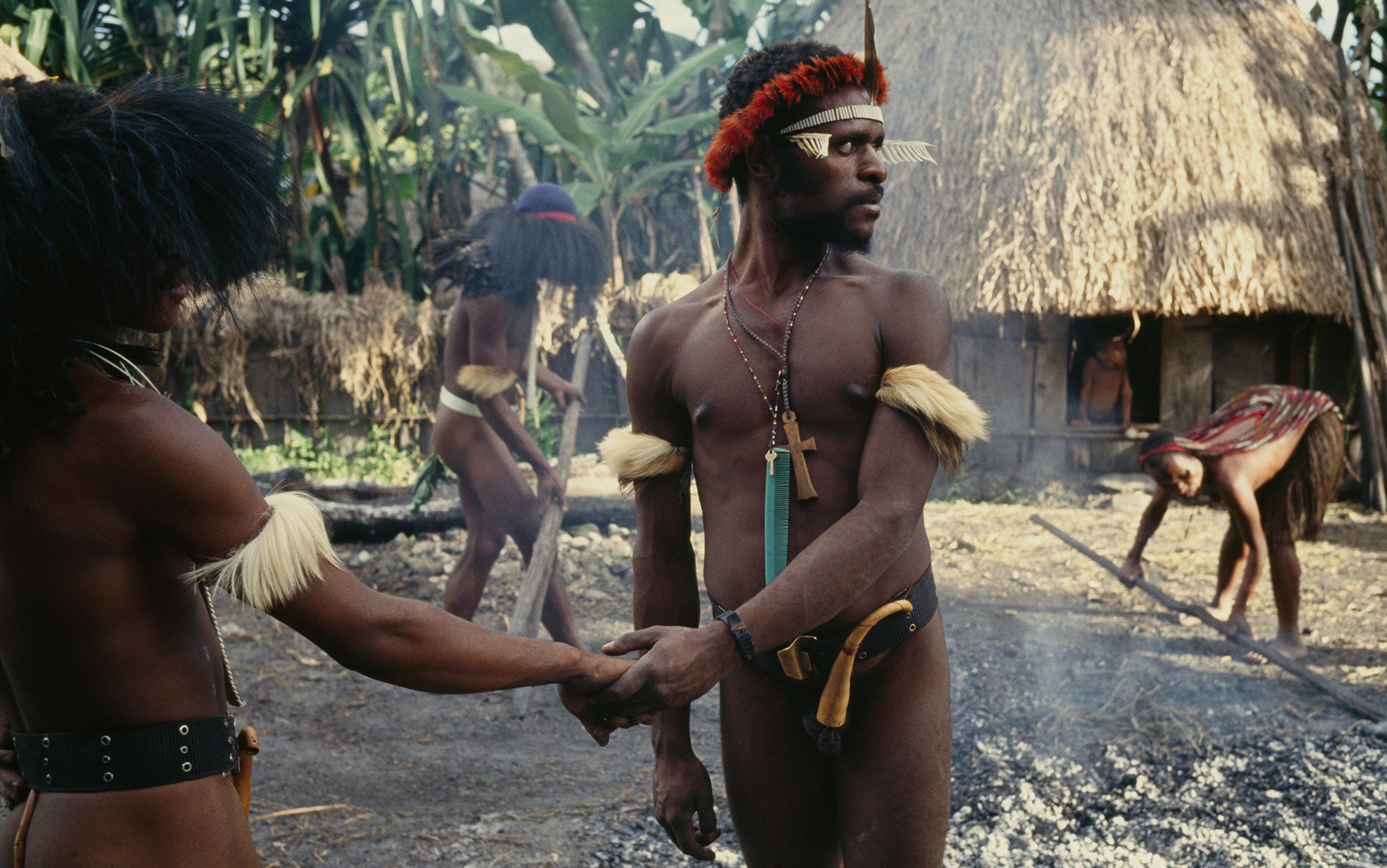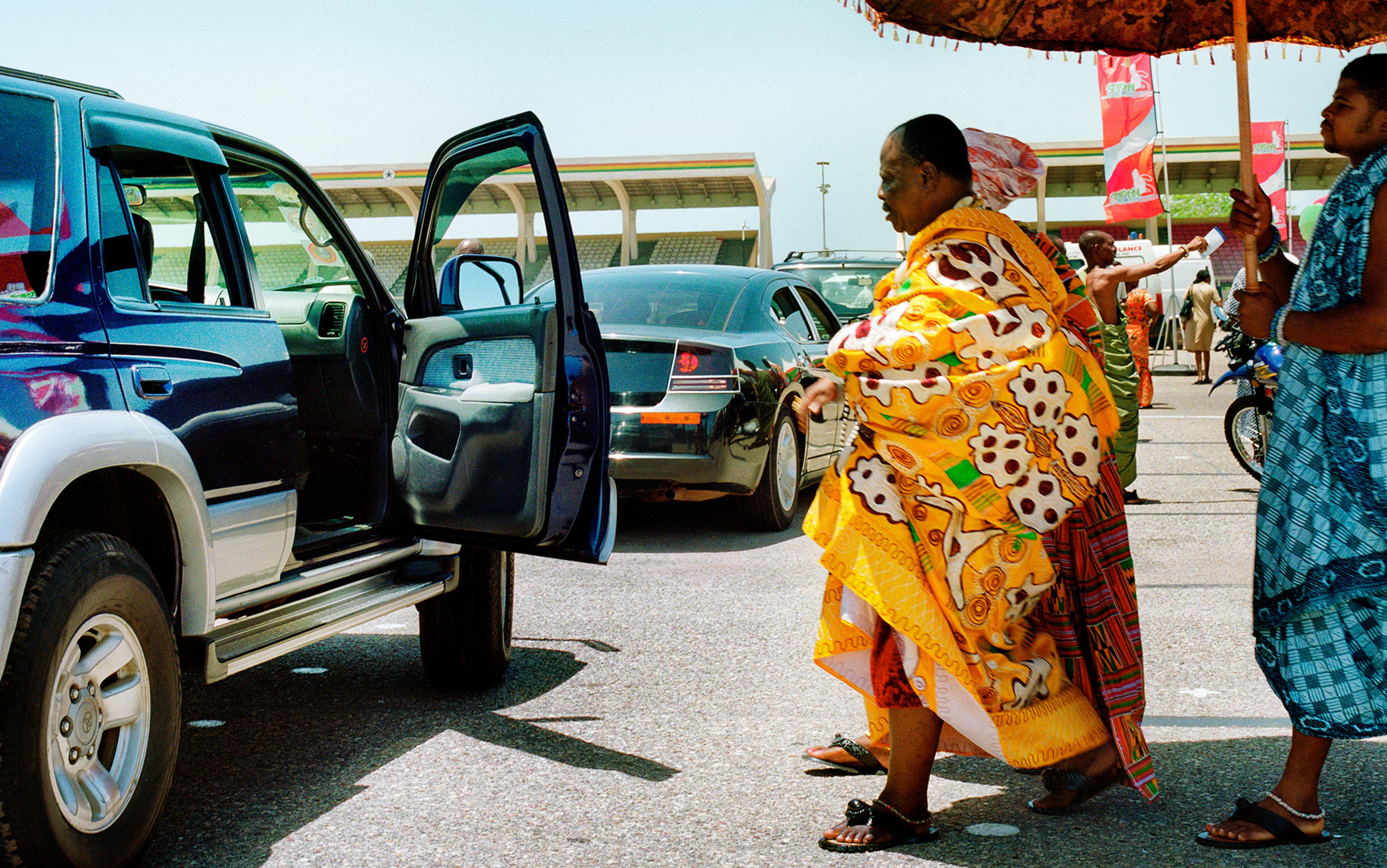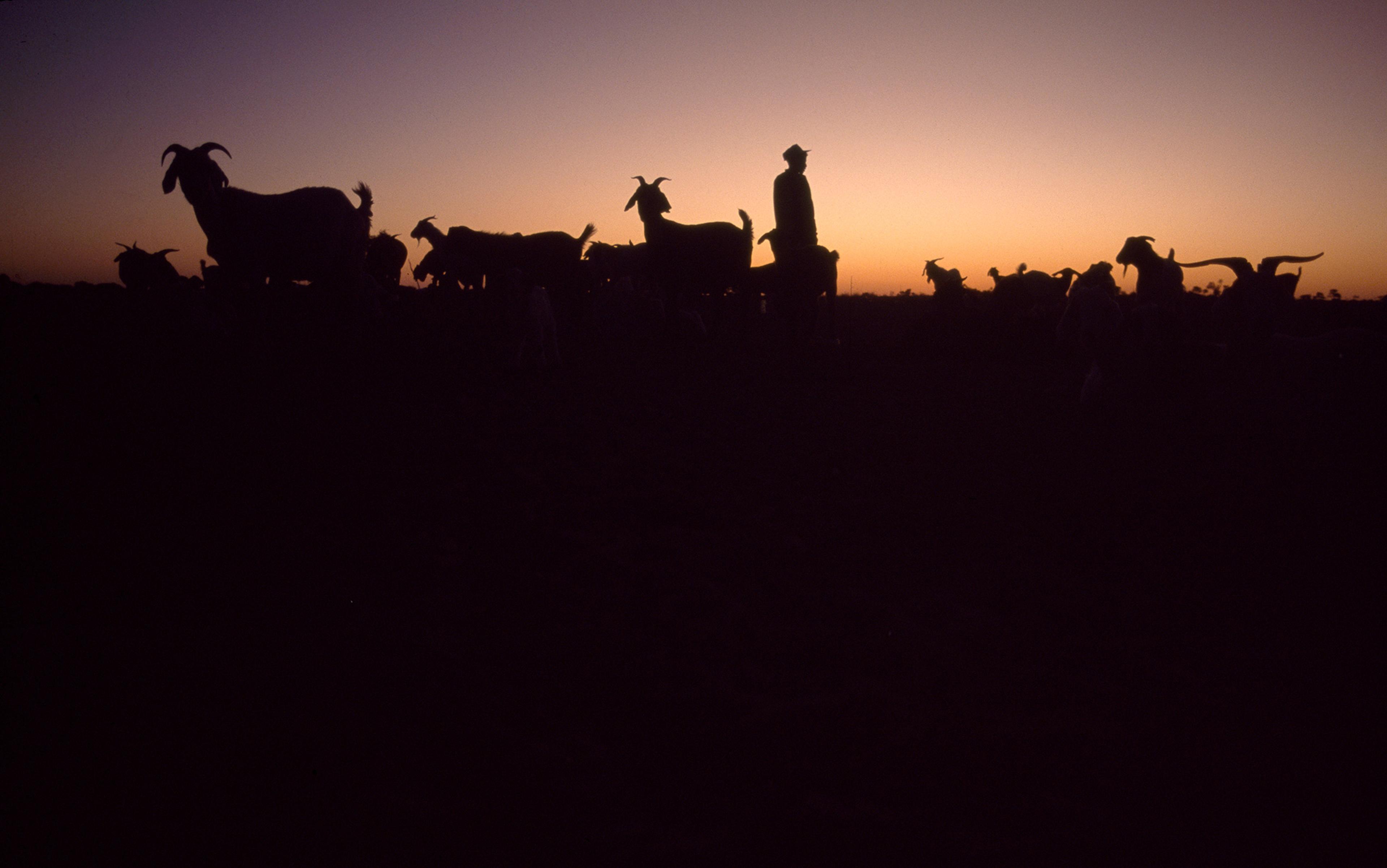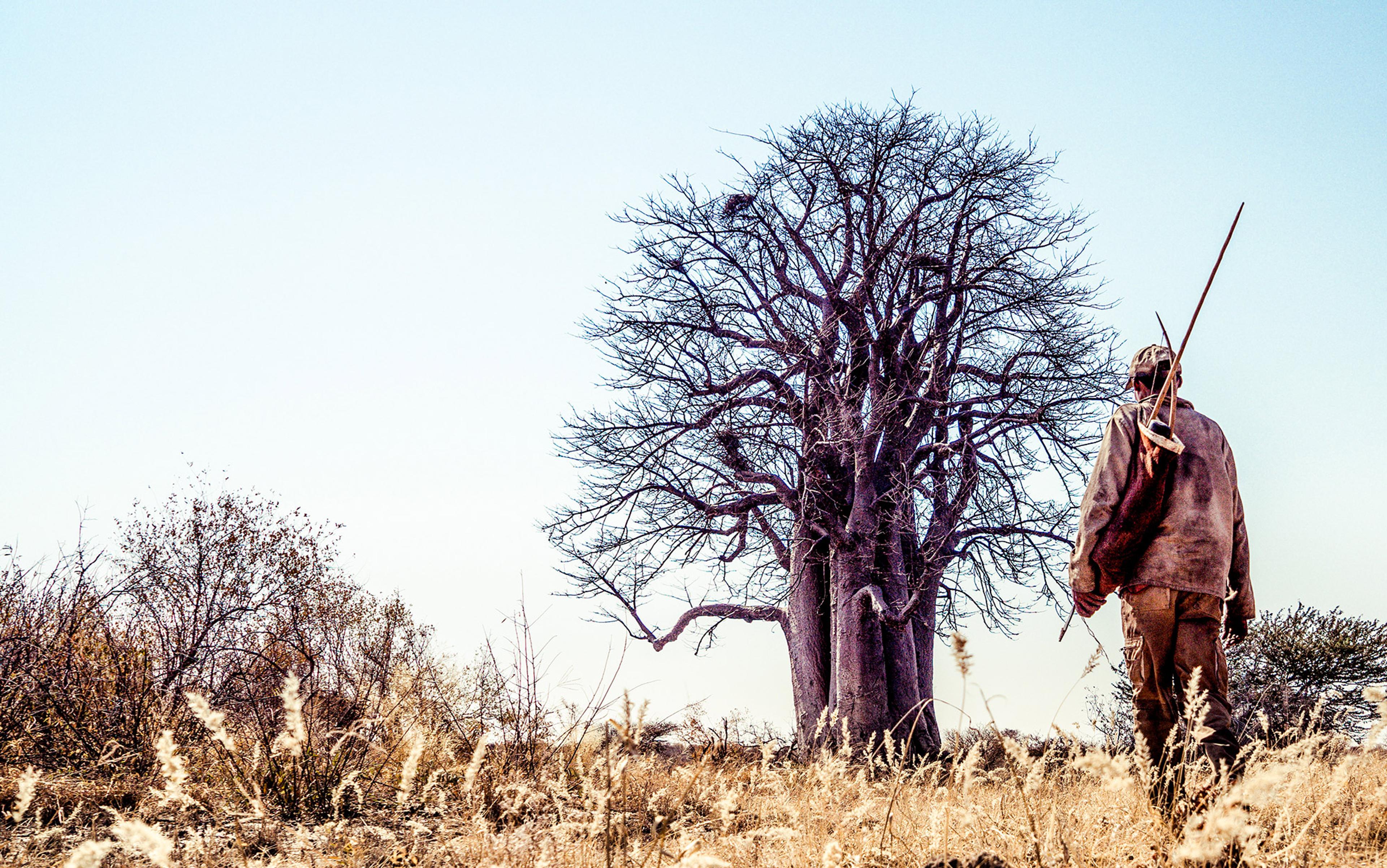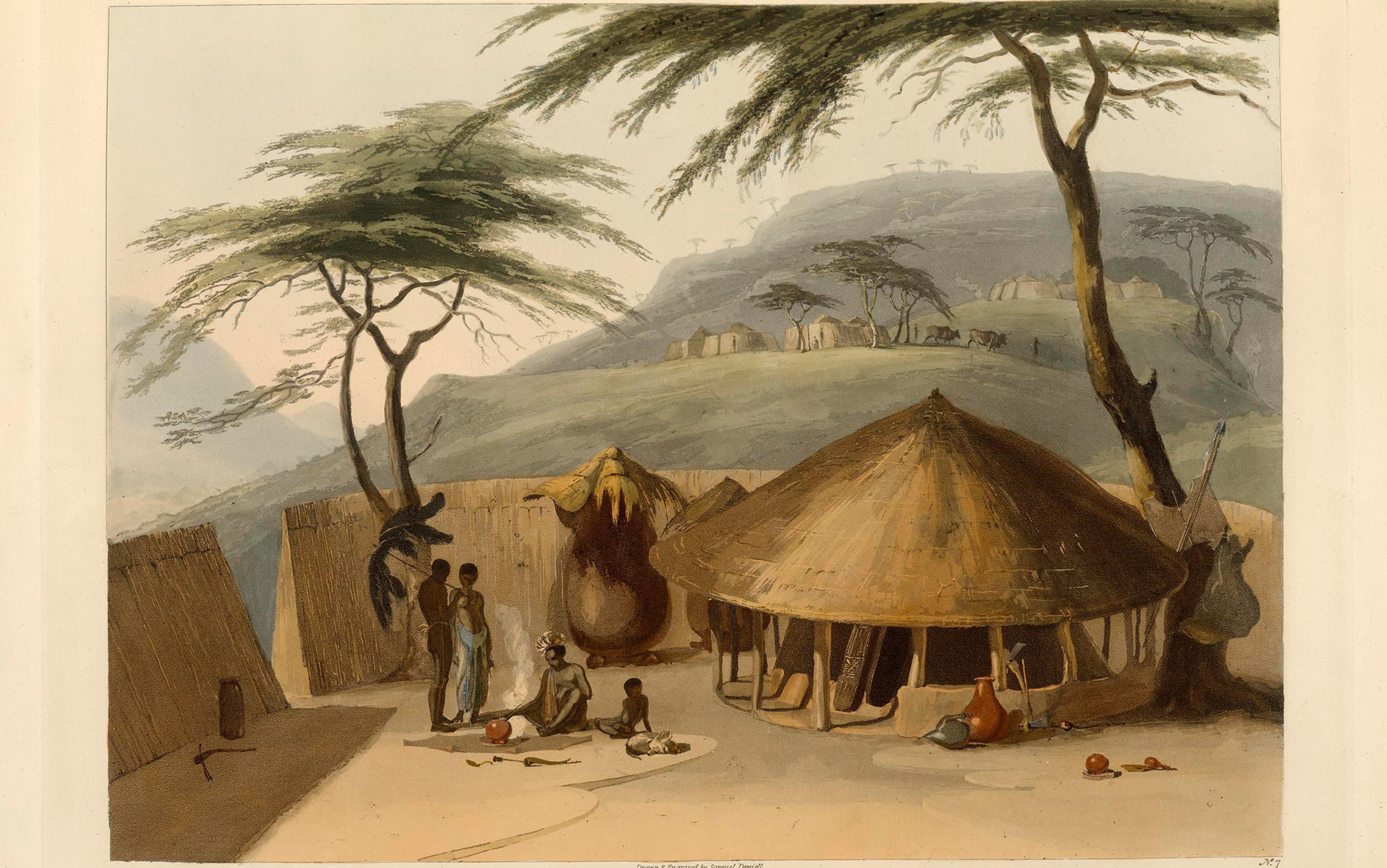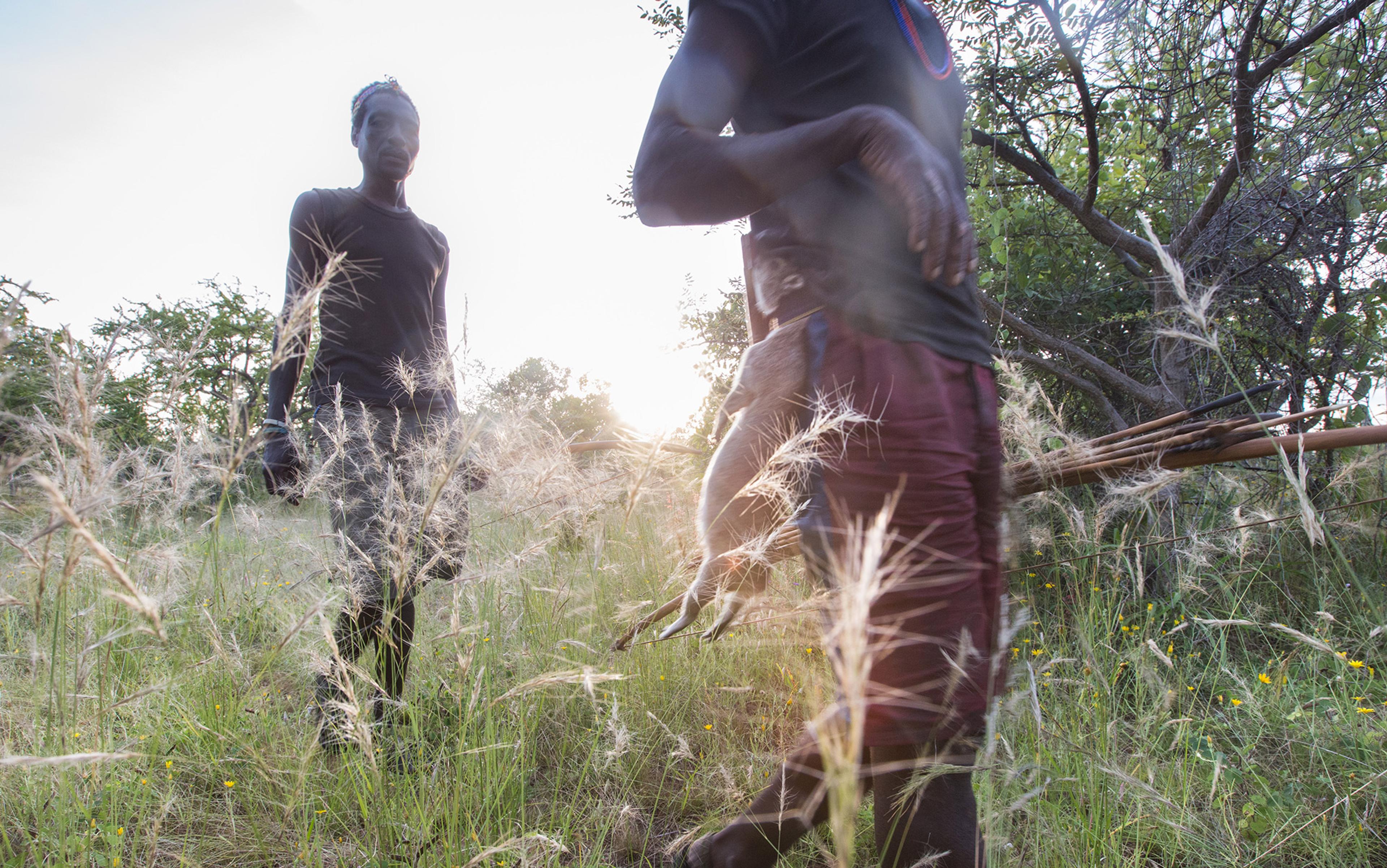Most of us live in social worlds that are profoundly unequal, where small elites have vastly more power and wealth than everyone else. Very few of the have-nots find this congenial. As experimental economists have shown, we tend to enter social situations prepared to take a chance and cooperate in collective activities. But if others take more than their share, we resent being played for a sucker. We live in unequal worlds, and few of us are unaware of, or indifferent to, that fact.
Since the elites are massively outnumbered, the origins and stability of unequal divisions of the cake are puzzling, especially once we realise that this is a very recent aspect of our social existence. Our particular species of humans has been around for about 300,000 years and, best as we can tell, for about 290,000 of those years we lived materially poorer but much more equal lives. For most of our life as a species, most communities lived as mobile foragers, shifting camps when local resources became scarce, but probably sticking to a regular pattern over a defined territory.
Mobile foragers live in small bands (tens, not hundreds), but with connections of kith and kin to neighbouring bands, in social worlds of a few hundred to a few thousand. In many respects, these forager cultures are varied. They have differing cultural traditions and face different environments. The Australian Western Desert and the High Arctic could hardly be less alike, and both differ sharply from the rainforests of the Congo basin. Even so, in crucial ways, their social lives are remarkably similar. They sometimes have elders or initiates, but they have no chiefs. No-one has command authority over other adult males. Relations between the sexes vary but, in many forager cultures, women are indispensable, skilled, autonomous and essential props of the foraging economy. They gather plant foods and small game, and make much of the equipment of everyday life. They often have a good deal of social and sexual choice.
In contrast with subsistence farmers, foragers are indulgent towards their children, who roam self-educating in mixed-age groups, learning by exploring and experimenting. While the US cultural anthropologist Marshall Sahlins exaggerated the ease of forager life in his book chapter ‘The Original Affluent Society’ (1972), he was right that they met their subsistence needs efficiently, and often quite quickly, in part through a profound commitment to sharing. These communities didn’t just happen to be fairly equal, but actively sought equality. The Canadian archaeologist Brian Hayden has long insisted that every community contains aggressive, ambitious individuals who’d like to be leaders. Foragers keep these upstarts on a short leash.
Somehow, after 290,000 years of living without anyone having the power to tell us what to do, and with every member of a community having about as much as everyone else, most of us are now subject to command, and with immensely less than a favoured few. Why? Of course, in the state societies we live in, there’s no mystery about the many accepting their subordination to elites. While elites are vastly outnumbered, they control the army, the police, the state apparatus. An attempt to seize elite wealth would be met by overwhelming coercive power, and even successful revolutions have a dismal record of largely replacing one elite with another, usually at the expense of many lives, mostly of the poor. So, for those outside the elite world, their least-worst option is to accept subordination, perhaps with individual or collective attempts at amelioration, depending on the specifics of the political environment.
No social world ever went from an egalitarian community to an elite-dominated, state-structured society in one fell swoop. It’s a gradual movement towards inequality. The pathway to inequality leads through unequal, but still small-scale and stateless, communities, in which incipient elites lived with and among their neighbours, and without control of coercive state institutions. As such, they were vulnerable, and as Christopher Boehm notes in Hierarchy in the Forest (1999), and Stephen Pinker too, in The Better Angels of Our Nature (2011), the denizens of pre-state communities aren’t shy about the judicious application of violence. So how did inequality establish and grow without the cloak of law and the shield of organised state power?
Once hereditary leadership backed by military power establishes, subordination and inequality are explained by entrenched differences in access to force. So the critical problem is to explain inequality in village societies where it doesn’t yet have the protection of institutionalised power. These ‘transegalitarian communities’ are dominated by ‘Big Men’ (as they’re called in New Guinea and Melanesia), that is, individuals with wealth and status. But they don’t rule as a right, and their sons don’t automatically inherit their standing. It’s in communities of this kind that inequality establishes. Once these cultures exist, we’ve had a shift from social worlds that were equal to worlds in which inequality was a routine and accepted fact of life – so much so that it often seemed natural.
There are two developments in mobile forager cultures that tend to set the stage for the establishment of inequality. One such scaffold to inequality was the emergence of clan structure. Clans have a strong corporate identity, built around real or mythical genealogical connection, reinforced by demanding initiation rites and intense collective activities. They become central to an individual’s social identity. Individuals see themselves, and are seen by others, primarily through their clan identity. They expect and get social support mostly within their clan, as the anthropologist Raymond C Kelly writes in Warless Societies and the Origin of War (2000). Once storage and farming emerged, incipient elites used clan membership to mobilise social and material support.
The second development was the emergence of a quasi-elite based on the control of information, which created a hierarchy of prestige and esteem, rather than wealth and power. This was originally based on subsistence skills. Forager life depends on very high levels of expertise in navigation, tracking, plant identification, animal behaviour, and artisan skills. The genuinely expert attract deference and respect in return for generously sharing their knowledge, as the evolutionary biologist Joseph Henrich argues in The Secret of Our Success (2015). As the social anthropologist Jerome Lewis has shown, this economy of information can include story and music, and the same can be true of its ritual and normative life. Indeed, there might be a fusion of ritual with subsistence information, if ritual narratives are used as a vehicle for encoding important but rarely used spatial and navigational information. There’s some suggestion of this fusion in Australian Aboriginal songlines, and the idea is expanded from Australia and defended in detail by the orality scholar Lynne Kelly in Knowledge and Power in Prehistoric Societies (2015). So there can be expertise and deference not just in subsistence skills, but also with regards to religion and ritual.
Farming and storage make inequality possible, even likely, because they tend to undermine sharing norms
While the original exchange of deference for access to expertise was probably adaptive for both parties, oblique social transmission (from a favoured few in generation N to all of N+1) puts manipulation on the agenda. When social information flows just from parents to children, maladaptive instructions have an automatic tendency to fade away. But the centralised transmission of the norms, rituals and ideology of a community can easily favour one group at the expense of others. The explorer E Lucas Bridges, in his classic Uttermost Part of the Earth (1948), details with amusement how the entirely cynical Yaghan initiates (a people indigenous to the Southern Cone in South America) terrify women and adolescents by dressing as ghosts. He had no doubt that any signs of female scepticism would have been dealt with by murder. We probably see this as well in some Australian forager communities that privilege a gerontocracy. Charles Hart and Arnold Pilling’s The Tiwi of North Australia (1960) is renowned for its description of one such gerontocracy, with the power of older men residing in their control of esoteric knowledge. It also made possible an alliance between incipient priests and elites in communities transitioning to inequality.
So, two scaffolds of inequality developed in the still fairly equal forager world. These scaffolds became potent as communities gave up movement in favour of a settled life – storage and farming – beginning about 10,000 years ago. Some foragers developed a lifestyle around storage (sometimes called ‘collectors’ rather than ‘foragers’). Hunters and fishers of the Pacific Northwest built an economy around salmon runs and marine resources. It’s possible that, in glacial Europe, sedentary foragers intercepted migrating herds, and built their economy around stored or smoked game. But giving up a life on the move and depending instead on stored foods is mostly connected to the origins of farming, and the new climatic regime of the Holocene, beginning about 12,000 years ago.
The viability of farming depends not just on access to the few wild species that can be shaped into crops and flocks, but on predictable weather patterns. The Holocene is not just warmer and wetter than the Pleistocene glacial that preceded it. It’s much more stable. Grain agriculture never developed in Aboriginal Australia in part because of the marked annual variation in many Australian climates. Without industrial storage and transport, dependence on crops would have been suicidal. Whatever the causes of this revolutionary change, its consequences were immense. Farming and storage make inequality possible, perhaps even likely, because they tend to undermine sharing norms, establish property rights and the coercion of labour, amplify intercommunal violence, and lead to increases in social scale.
First, let’s consider storage, sharing and property. For mobile foragers, sharing is insurance. Hunting especially is very chancy, requiring both luck and skill, so it’s adaptive to share if you succeed today, on condition that others share with you when you fail. Targeting plants and small animals is more of a sure bet, though in some forager communities even these are shared, as the social rewards of generosity are important, and the social costs of refusing are high since the intimacy of forager camps makes success hard to conceal.
Storage, however, tends to erode sharing. Storing, like sharing, is a way of managing risk, and farmers are more likely to store than to share. Variation in supply within the community is likely to flow from variation in commitment and effort, not differences in luck. Local bad luck – unfavourable weather, a plague of pests – will probably affect everyone in a community, which makes sharing a poor form of insurance. It’s to my advantage to share with you, if my good years are your bad ones, and vice versa (so long, of course, as you return the favour). Not so if we’re both having it tough at the same time, as we have no surplus to share; and not so if we both have good years together, as then we don’t need one another.
Crop farming is also arduous and time-consuming. The returns are low, per hour worked, and no one has ever thought subsistence farmers made affluent societies. Land must be cleared, weeded, protected, improved, sometimes watered. These efforts must be maintained for years, not just months. It would simply be a bad idea for people to commit to these efforts without something like property rights. Likewise, it would be maladaptive for children to remain with their parents working their land unless these rights included a right of transfer. So storage, especially storage based on crops, will tend to produce a community of independent family economies. With inheritance, that will in itself tend to produce wealth inequalities, if only because family size variation will force some families to divide their pie more finely than others. Once wealth inequalities develop, they tend to increase. If a son inherits only a quarter of his parents’ land, his children are apt to have still less, and living on the edge of just enough, they’re more vulnerable to minor bad luck, and to the accumulation of debts and obligations they can never repay.
Storage opens the door to coerced labour. Sedentary collectors sometimes keep slaves, but mobile foragers don’t. Foraging, even when it’s not large-game hunting, depends on high levels of autonomy and skill. Foragers spend their time alone, or in groups of three or four, half a day’s walk from camp. Autonomous, small-party searching is essential to the efficient use of territory. As a consequence, the economic challenge of coercive supervision of mobile foraging is insurmountable since you’d need as many guards as slaves. Labour on farms is spatially focused and often much less skilled. It can be supervised and controlled. Moreover, it’s tempting to do so, as much farm work is intrinsically unappealing: unlike archery, hoeing will never be an Olympic sport. In many subsistence agricultural communities, when slaves aren’t to be had, much of the work is offloaded to women and children. Storage, and especially storage based on crops, often leads to subsistence economies with less autonomy and more coercion.
The social mechanisms that keep alphas in check in forager communities depend on intimacy and trust
Storage also makes intercommunity violence more likely. There is among scholars immense controversy about the extent of intercommunal violence among mobile foragers. On one view, the threat of intercommunal violence was the overriding feature of the world of mobile foragers of the mid- to late-Pleistocene; see the economists Samuel Bowles and Herbert Gintis’s book A Cooperative Species (2011). I am very sceptical. There’s no archaeological evidence of such violence till very late in the Pleistocene. Moreover, forager camps are difficult and unrewarding targets. Outsiders will rarely know their exact locations because, if violence is such a threat, there would be little or no friendly travel between tribes, and so neighbouring groups won’t know much of one another’s territories. Foragers have few material possessions, are armed by default, and are expert at tracking and reading their country, making them hard to surprise in their camp sites. Finally, foragers’ emphasis on autonomy and consensus in decision-making is hardly an ideological signature of a militarised world.
There’s no doubt, however, that intercommunal violence has often been a major threat to collectors and subsistence farmers. The neighbours’ stores are a tempting target, as are their flocks, improved lands and the people themselves, as slaves and second wives. But they’re more than just tempting targets – they’re potential threats, as your possessions are equally a temptation to them. Sedentary folk can also accumulate goods worth stealing in a way that foragers never could. Unusual material possessions came to be a sign of wealth and influence. Pottery, obsidian and metal began as prestige goods in these early sedentary communities. This permanent threat of intercommunity violence offers incipient elites an opportunity to present themselves as able to negotiate peace, barter and build alliances on the community’s behalf, so long as this leading role is backed by the community as a whole.
Moreover, farming tends to lead to population growth. Interbirth intervals shrink as mothers no longer have to carry toddlers between camps, while farming provides a reliable source of weaning foods. Crop-growing is arduous, but it intervenes lower in the food web, and thus secures a greater proportion of local biological productivity for human use. That’s especially true if yields are improved by weeding, fertilising or irrigating. A farmer’s food supply isn’t as balanced and healthy as forager foods. But there’s certainly more food. An increase in community size matters, for many of the social mechanisms that keep alphas in check in forager communities are scale-dependent. They depend on intimacy and trust.
Finally, storage will often lead to a surplus, as it’s prudent for each family (or economic unit) to store more than they expect to need. It’s wise to allow for contingencies. But when a family does end up with stores in excess of their subsistence needs, that surplus is available as a tool in local politics. By lending it to those whose stocks have run short, it can create obligations; a favour that can be called in. Alternatively, a surplus can be used to build prestige by transmuting it into high-status goods or services. Crops can be turned into beer, pigs or displays (by being used to support non-subsistence activities). Competition for status, influence and power is fuelled by surplus. Yet there’s no surplus without storage, and only a limited surplus without farming.
These downstream effects of storage and farming set up an engine of inequality, with transegalitarian societies emerging as a dynamic consequence of storage in conflicted environments. Recognition of property rights and inheritance allows wealth inequalities to establish and even grow. These can provide a surplus used for internal politics, and an ambitious, persuasive individual can add to their own stores through calling in debts and mobilising support from his clan. These accumulated stores can then be spent in prestige-enhancing displays such as feasts or other expensive rituals, and sometimes by sponsoring the building of ritual structures. These displays are partly to impress their own community, but also, and very importantly, they’re targeted at their opposite numbers in other communities, others who equally combine ambition with access to wealth.
In regional environments in which intercommunity violence is a threat but not inevitable, a display of wealth and community organisation sends other communities a message that you’d be a dangerous enemy but a valuable partner in both trade and predatory alliances against third parties. This gives most members of the community some self-interested reason to support these ambitious displays. But the successful sponsors of such displays reap the main benefits, establishing themselves in the eyes of other communities as the go-to person, becoming the conduit through which social and material exchange with other communities flows. It’s a high-risk strategy, especially early in the shift to a transegalitarian world. But if the incipient Big Man pulls it off, an initial disparity of wealth is parlayed into prestige and political influence, which in turn builds further wealth through a pivotal role as fixer and facilitator, and the cycle iterates. Polly Wiessner’s ‘The Vines of Complexity’ (2002) is a wonderful case study from Papua New Guinea of this dynamic in action, and of how the dynamic escalates. Early in this process of biding for prestige, and a pivotal factor in mediating between communities, an ambitious would-be mover-and-shaker might accumulate and give away 10 pigs at a feast. A few generations later, it was both possible and necessary (for the same political effect) to accumulate and give away 250.
Widespread sharing and consensus decision-making aren’t contrary to ‘human nature’ (whatever that is)
So bids for power work by transmuting wealth into political influence, which returns more wealth. Those bids are much more likely to succeed because of the decay of levelling coalitions that enforced (approximate) equality in forager worlds, because collective action to restrain ambition became increasingly difficult. The change in scale mattered: foragers live in small (and to Western eyes) astonishingly intimate social worlds (their shelters, for example, are typically small, closely packed and without walls). The social worlds of farmers are larger and less intimate, and this makes collective consensus-formation more difficult. Additionally, the interests of those outside elite circles are only partially aligned. In transegalitarian worlds, wealth differences aren’t yet extreme, and those in the middle have a stake in the recognition of property rights, with some being allies or supporters of the local Big Man, expecting some return for their support. While they might want ambition to be kept within bounds, their interests aren’t served by equalisation, and conflict within the community increases the risk of predatory interventions from outside, a risk important to all but the poorest. Finally, the egalitarian ethos of forager communities – an ethos that motivates and mobilises restraint of ambition – erodes in an economy based on storage rather than sharing.
Such erosion is likely to be much accelerated by alliances between ritual leaders and incipient elites, alliances documented in Hayden’s The Power of Ritual in Prehistory (2018), since the normative life of these communities is articulated and taught through its communal ritual life. It’s no coincidence that we tend to see (for example) shifts in marriage norms, so that would-be husbands have to pay a bride price in pigs or other prestige resources. For poorer men, marriage will thus bind them in obligations of debt to their wealthier sponsors. Elite-favouring ritual beliefs can be more dramatic still. In their work on transegalitarian communities in Melanesia, the anthropological archaeologists Kent Flannery and Joyce Marcus give a vivid example from the Solomon Islands: a mover-and-shaker established his local reputation in part by sponsoring the construction of a ritual house (itself a sign of wealth and a source of prestige), but also through his reputed alliance with, and protection by, a pigs-blood drinking demon. It helps to have the priests on side.
If this picture of the road to inequality is right, it leads to four expectations. First, inequality depends on a prior establishment of an economy of storage and an expansion in social scale. Second, transegalitarian communities emerge from forager communities with clan-based organisation. Third, transegalitarian communities emerge from forager communities where the normative and ritual life is in the hands of a small group of initiates. And finally, such communities emerge in regional contexts with intermediate levels of intercommunity violence, contexts in which violence is a risk, but one that can be managed.
Bottom line: egalitarian, cooperative human communities are possible. Widespread sharing and consensus decision-making aren’t contrary to ‘human nature’ (whatever that is). Indeed, for most of human history we lived in such societies. But such societies are not inherently stable. These social practices depend on active defence. That active defence failed, given the social technologies available, as societies increased in scale and economic complexity. There’s no going back to Pleistocene equality, and I for one wouldn’t embrace the social intimacy and material simplicity of such lives. But we do have new social technologies. China (especially) is showing how those can be used to enhance elite surveillance. Let’s hope they can be reconfigured to support more bottom-up social action, to mitigate some of the effects of imbalances of wealth and power.
